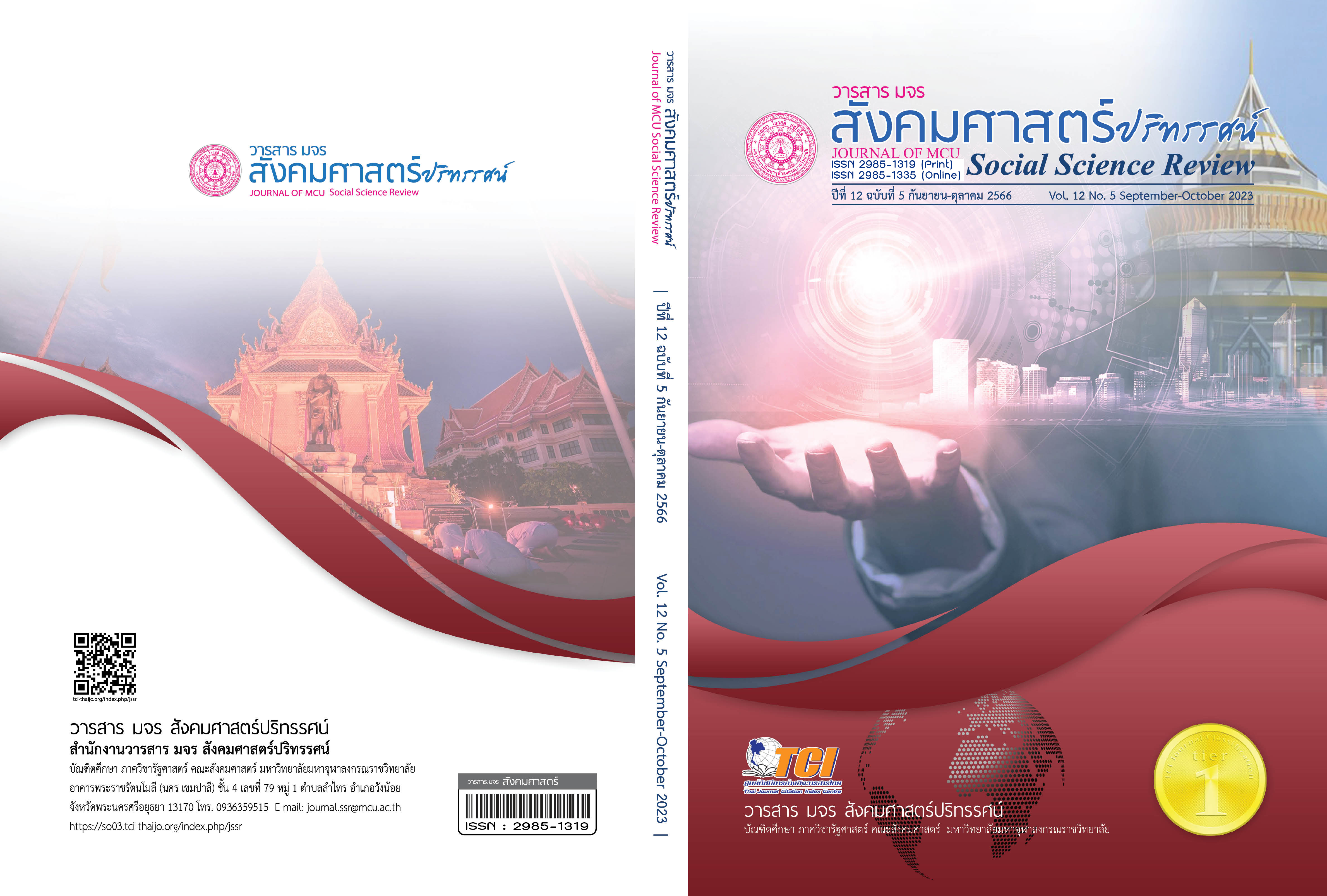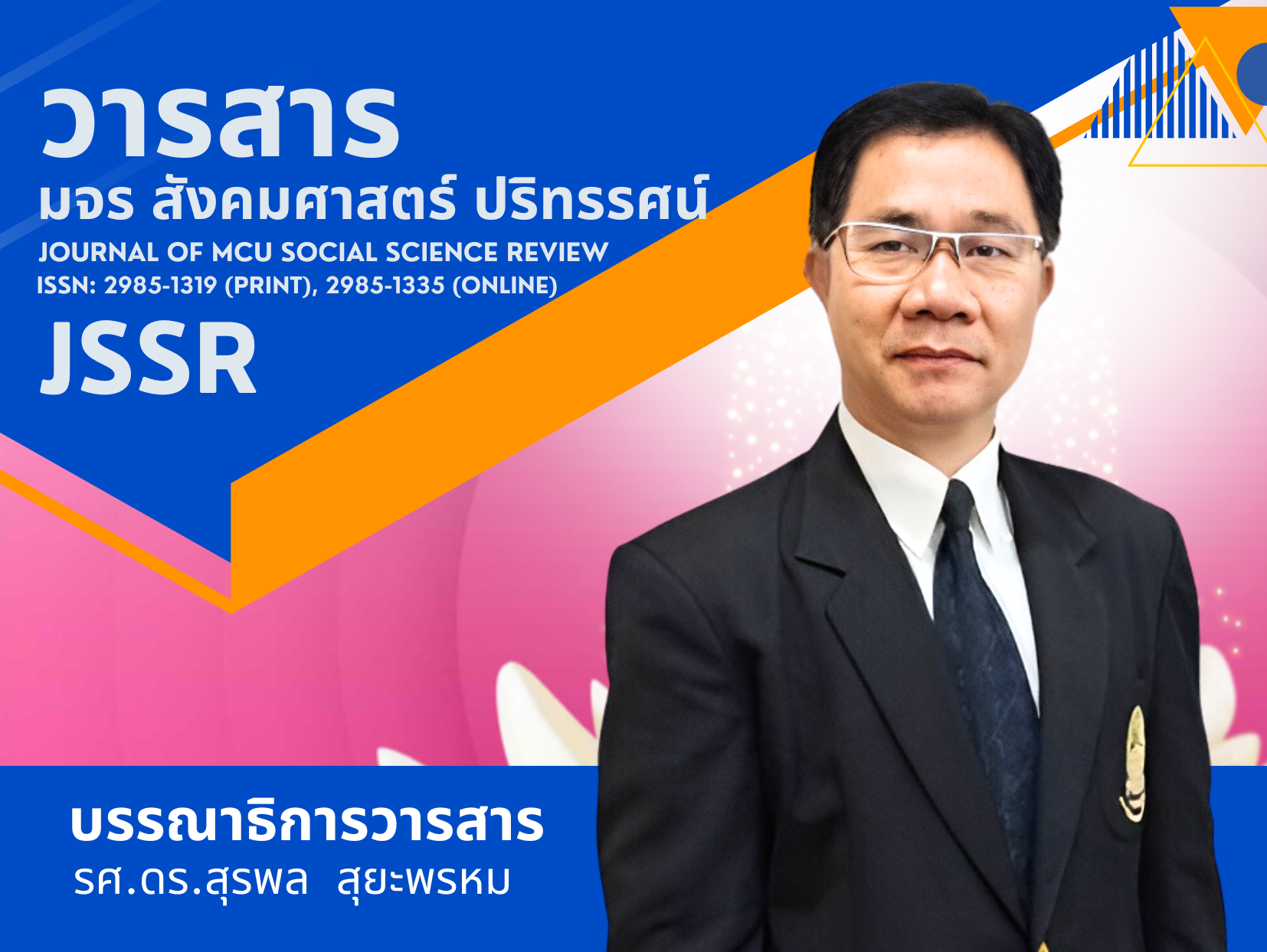USING SOCIAL MEDIA TO PREVENT AND SUPPRESS CURRUPTION OF THE ROYAL THAI POLICE
Keywords:
social media, Prevention and Suppression of Corruption, Royal Thai PoliceAbstract
In the digital age society, the use of social media has played an important role in daily life in various dimensions, whether it be communication, transactions, as well as receiving information. Moreover, it can be done anywhere. at all times, including in developing the role and operations of the civil society sector in strengthening the prevention and suppression of corruption in various agencies to be more effective, such as the Royal Thai Police It has given the public an opportunity to participate and play an important role in pointing out channels of corruption in the agency to be able to investigate corruption. Seeking information about corruption to disseminate to people in society. It also helps in changing incorrect values into the right direction. and prevention and suppression of corruption as a policy of the Royal Thai Police. make people network organizationsAnd various agencies can follow the work of police officers through new media channels such as Line and Facebook. Instagram or through live channels to point out clues Provide information to offenders through online channels. This article proposes guidelines for using social media to prevent and suppress corruption in the Royal Thai Police. It is a guideline to solve the problem of corruption. Give the public an opportunity to participate when they see something incorrect. Not treated fairly or inappropriate treatment by police officers.
References
ฐานันท์ วรรณโกวิท. (2554). ประสบการณ์จากการฝึกอบรมเส้นทางคอร์รัปชั่น ณ มหาวิทยาลัยตูลูสกาปิโตล สาธารณรัฐฝรั่งเศส. วารสารยุติธรรมปริทัศน์, 6(6), 39-66.
นนทวัชร์ นวตระกูลพิสุทธิ์ และคณะ. (2555). การวิจัยเพื่อศึกษารูปแบบการทุจริตเชิงนโยบาย (รายงานการวิจัย). นนทบุรี: สำนักงานคณะกรรมการป้องกันและปราบปรามการทุจริตแห่งชาติ.
นภดล กรรณิการ์. (2551). เอแบคโพล : ประเมินความสุขของคำทำงาน (Happiness At Workplace). สืบค้น 5 มกราคม 2566, จาก http://www.ryt9.com
พิรงรอง รามสูต และคณะ. (2547). การกำกับดูแลเนื้อหาอินเทอร์เน็ต (รายงานการวิจัย). กรุงเทพฯ: สำนักงานกองทุนสนับสนุนการวิจัย.
พีระ จิรโสภณ. (2551). ทฤษฎีการสื่อสารมวลชน. สืบค้น 20 พฤษภาคม 2566, จาก https://www.stou.ac.th/Thai/Schools/sca/MA_TEXT/unit010.txt
ศูนย์ปฏิบัติการต่อต้านการทุจริต กระทรวงมหาดไทย. (2563). กลไกด้านการป้องกัน ปราบปรามการทุจริตและประพฤติมิชอบ และการส่งเสริมคุณธรรม จริยธรรมของกระทรวงมหาดไทย. วารสารดำรงราชานุภาพ, 20(61), 62-99.
______. (2566). แผนปฏิบัติการการป้องกันและปราบปรามการทุจริตประพฤติผิดมิชอบสำนักงานตำรวจแห่งชาติ พ.ศ. 2566. สืบค้น 20 กุมภาพันธ์ 2566, จาก http://www.huamarkpolice.au.edu/files/28-files02.pdf
สำนักงานคณะกรรมการป้องกันและปราบปรามการทุจริตแห่งชาติ. (2565). แผนปฏิบัติการด้านการต่อต้านการทุจริตและประพฤติมิชอบ ระยะที่ 1 (พ.ศ. 2563 - 2565). สืบค้น 25 กรกฎาคม 2565, จาก https://www.nacc.go.th
______. (2558). พิพิธภัณฑ์ต้านโกง. สืบค้น 25 กรกฎาคม 2565, จาก http://acm.nacc.go.th/aboutus
สำนักประชาสัมพันธ์ สำนักงานเลขาธิการวุฒิสภา. (2561). กลยุทธ์การประชาสัมพันธ์ผ่านสื่อสังคมออนไลน์ด้วยการใช้เฟซบุ๊ก (Facebook). กรุงเทพฯ: สำนักงานเลขาธิการวุฒิสภา.
สุดสงวน สุธีรสร. (2547). อาชญาวิทยา. กรุงเทพฯ: มหาวิทยาลัยธรรมศาสตร์.
สุวรรณ ไตรมาลัย. (2554). บทบาทของสื่อมวลชนต่อการป้องกันและแก้ไขการทุจริตคอร์รัปชั่น. ขอนแก่น: มหาวิทยาลัยขอนแก่น.
สุวรรณ สุวรรณเวโช และคณะ. (2561.). การปฏิรูปตำรวจ : การปรับปรุงองค์การและการบริหารจัดการ. วารสารวิจัยราชภัฏธนบุรี รับใช้สังคม สถาบันวิจัยและพัฒนา มหาวิทยาลัยราชภัฏธนบุรี, 4(1), 1-14.
เสาวนีย์ ไทยรุ่งโรจน์ และคณะ. (2553). โครงการประเมินสถานการณ์ด้านการทุจริตในประเทศไทย (รายงานผลการวิจัย). กรุงเทพฯ: มหาวิทยาลัยหอการค้า.
แสงเดือน ผ่องพุฒ. (2556). สื่อสังคมออนไลน์ : แนวทางการนำมาประยุกต์ใช้. บรรณารักษ์ปฏิบัติการ สำนักวิชาการ สำนักงานเลขาธิการวุฒิสภา, 3(20), 1-19.
อชิรวิทย์ สุพรรณเภสัช. (2540). พระบรมราโชวาทและพระบรมราโชบายในการบริหารงานตำรวจ. กรุงเทพฯ: บริษัทเพอร์เฟคท์พริ้นท์แอนด์แอ็ดเวอร์ไทซิ่ง.
Williamson, A. (2021). Social Media Guidelines for Parliaments. Retrieved March 20, 2021, from http://www.ipu.org/PDF
Downloads
Published
How to Cite
Issue
Section
License
Copyright (c) 2023 Journal of MCU Social Science Review

This work is licensed under a Creative Commons Attribution-NonCommercial-NoDerivatives 4.0 International License.
In order to conform the copyright law, all article authors must sign the consignment agreement to transfer the copyright to the Journal including the finally revised original articles. Besides, the article authors must declare that the articles will be printed in only the Journal of MCU Journal of Social Sciences. If there are pictures, tables or contents that were printed before, the article authors must receive permission from the authors in writing and show the evidence to the editor before the article is printed. If it does not conform to the set criteria, the editor will remove the article from the Journal without any exceptions.




